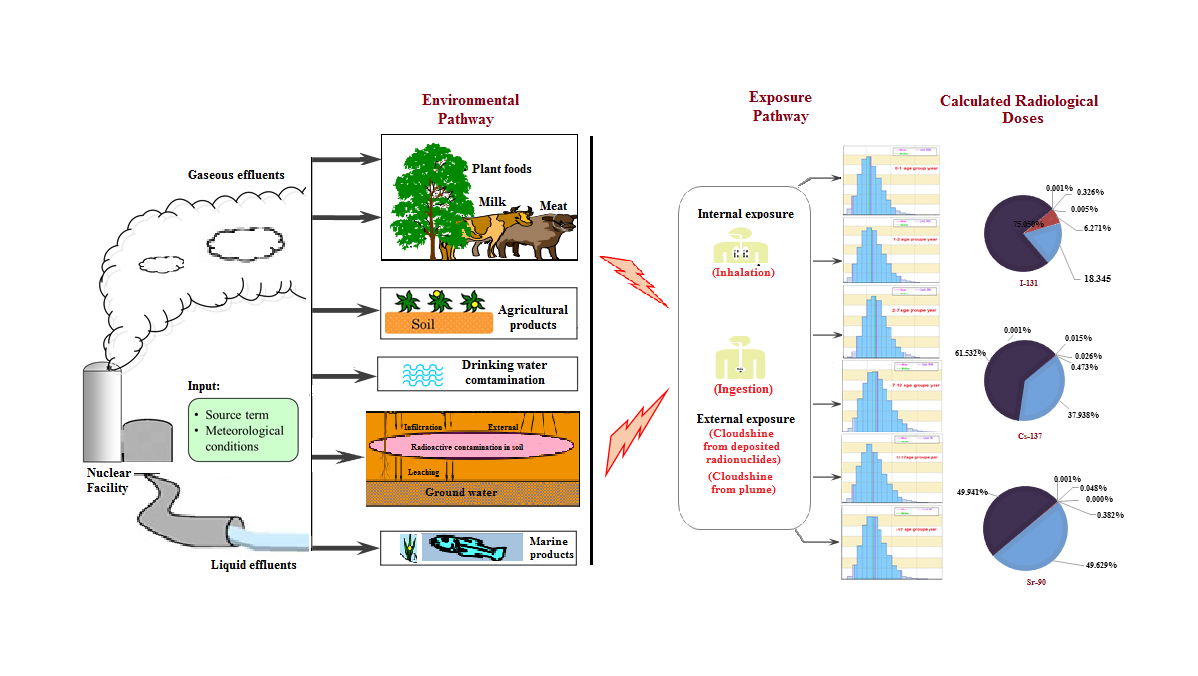Numerical Dose Assessment and Short-term Radioactivity Impact on Foodstuff for Continuous Release from of TRIGA Mark II Research Reactor
Main Article Content
Abstract
This work is a contribution to the assessment of the radiological consequences of radioactivity and radiation dose for TRIGA Mark II research reactor during continuous operation. The potential release to the atmosphere of 131I, 137Cs, and 90Sr are computed in the South direction is calculated using CROM software. We have attempted to evaluate the daily concentration of radioactivity and its impact on foodstuff. The annual average dose received from internal and external irradiation by age group through the different pathways were also considered. The simulation results showed that the highest air concentration was found at 225 m distance from the source and the calculated doses were found to be significantly very low. The contribution of Iodine 131I is significantly higher in fruit vegetables, while the 137Cs and 90Sr are dominant in animal products. Furthermore, inhalation and ingestion of contaminated food were found to be the most likely routes of entry into the human body.
Article Details

This work is licensed under a Creative Commons Attribution-NonCommercial 4.0 International License.
Published articles are under the copyright of the Applied Environmental Research effective when the article is accepted for publication thus granting Applied Environmental Research all rights for the work so that both parties may be protected from the consequences of unauthorized use. Partially or totally publication of an article elsewhere is possible only after the consent from the editors.

